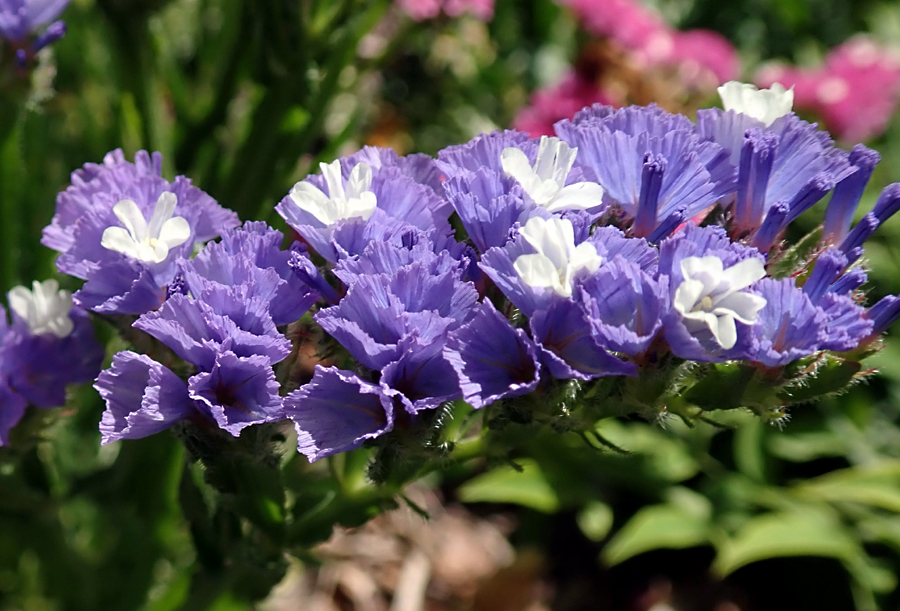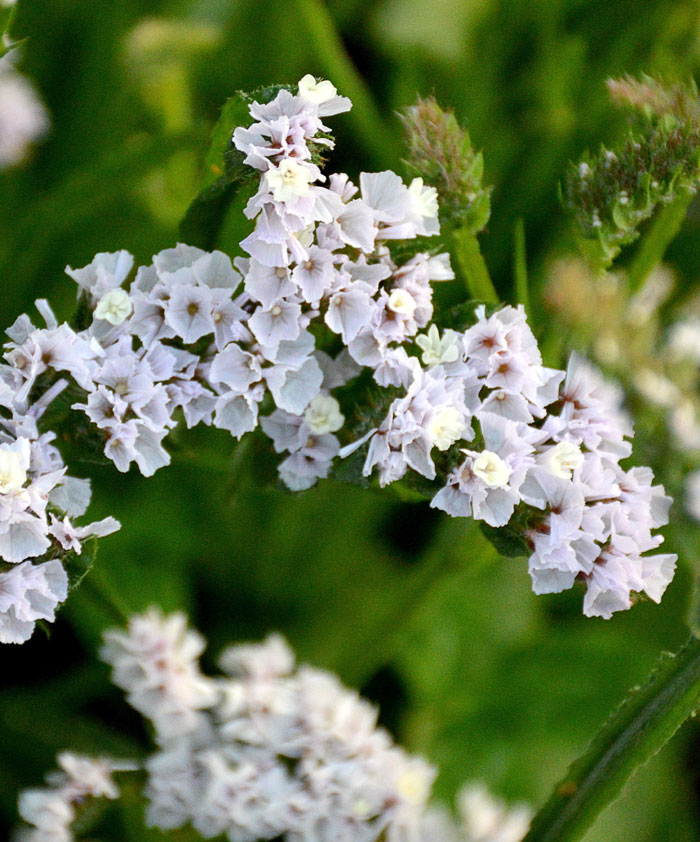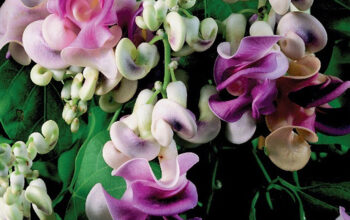Statice Flowers (Limonium)
There are 120 species of flowering plants in the genus Limonium. These plants are also known as sea-lavender, static, caspia, and marsh-rosemary. The species are not related to lavender or rosemary, despite their common names. Rather, they belong to the Plumbaginaceae family, or plumbago.
Generally, they grow from rhizomes 10–70 cm tall, though they can grow up to 2 meters tall as woody shrubs. In the basal rosette, the leaves are simple and entire to lobed, with a length of 1–30 cm and a width of 0.5–10 cm; at the flowering stems, only small-scale leaves can be seen. Flowers range in size from 4–10 mm, with five-lobed calyxes and five stamens; flowers are generally light pink or violet to purple, with a few species having white or yellow flowers. A number of species are apomictic. A single seed is enclosed partly by the persistent calyx in the fruit, which is a small capsule.
Overview Statice Flowers
Scientific name Limonium
Common name Sea lavender, statice, notch leaf, marsh rosemary, misty, sea pink, Caspia
Plant type Annual plant
Sun Full sun
Soil Well-drained, rich soil
Soil pH 6.0-7-0
Flower colors Blue, Yellow, Orange, White Purple, Pink
Blooming time Fall and summer
How to Grow and Care Statice Flowers
Since its small, colorful blooms dry quickly, statice is a favorite annual cutting garden. Salty and sandy soils are no problem for these somewhat stiff plants, which makes them an ideal choice for gardens along the coast.
Growing from seeds
Planting statice plants is an easy way to fill up your cutting garden with flowers. They can be started from seeds and are economical to grow. To get the earliest blooms, start the seeds indoors two months before your average last frost date. You can also sow the seeds directly in the garden once the soil has reached 65 degrees Fahrenheit. Germination occurs in 14 to 21 days with only a light dusting of soil and average moisture. It is possible to plant riotous spring blooms in frost-free areas by sowing them in fall.
Growing from cuttings
When the summer months come around, take cuttings that are between 10 and 12 cm in length. Dip the cuttings into hormone rooting powder after they have been cut off at the bottom leaves. Plant the cuttings in potting soil and keep them moist.
Sunlight
It is very important to provide them with full sun exposure for the best possible bloom, so make sure you place them in a bright, sunny location. Although the plant can survive a bit of shade, it will likely flop on its side and needs support.
Soil
Temperature and sandy soils are ideal growing conditions, but they will also tolerate other well-draining soils, as long as they are not too fertile. In containers, sandier soils will do better than clay, so if your landscape features heavy soils, you will have more success growing statice.
Watering
Until the plants get established, it is important to water your statice seeds every other day. Statice plants are quite a drought tolerant after they reach maturity, so plan to water them once or twice a week once they reach their full potential. It is best for them to live in drought conditions because too much water could cause diseases. Make sure to water only when a drought lasts for many months. Those who live in rainy areas should plant their statice in protected areas because they are extremely vulnerable to both disease and pests when exposed to prolonged moisture.
Humidity
Cool temperatures are favorable for them. Relative humidity of 90% or higher is required for spores to germinate and infect plants. Infected pores require eight hours of wetness before infection occurs. In greenhouses, maintain low relative humidity and good air circulation to prevent infection.
Fertilizer
An application of light fertilizer may be made after new growth appears. Granular fertilizers shouldn’t be applied to the plant crown or foliage, as this can cause burn injury. Make sure that you use slow-release fertilizer at a low rate, as higher rates may result in root rot. Don’t over-fertilize Statice since it is tolerant of poor soils. When plants receive too much water or fertilizer, they flop or succumb to a fungal infection.
Pruning
Without cutting back statice perennials such as Limonium lacifolia and Statice tatarica, leave them lying in the garden. Spring is the time to remove all the dead or dying plants. Winter hardiness allows statice plants to survive the winter cold without pruning or cutting back.
Read also:
How to care for orchids. Viburnums shrubs growing and care. Calibrachoa (million bells) growing tips. How to grow Poppies. How to propagate plants by cutting. Organic cucumber growing and care tips. Growing Kalanchoe plants in your garden. Foxtail fern growing guide. Growing Pitcher plants at home. 12 Best plants to grow from cuttings. Propagate Roses with potatoes.
For Pin:







